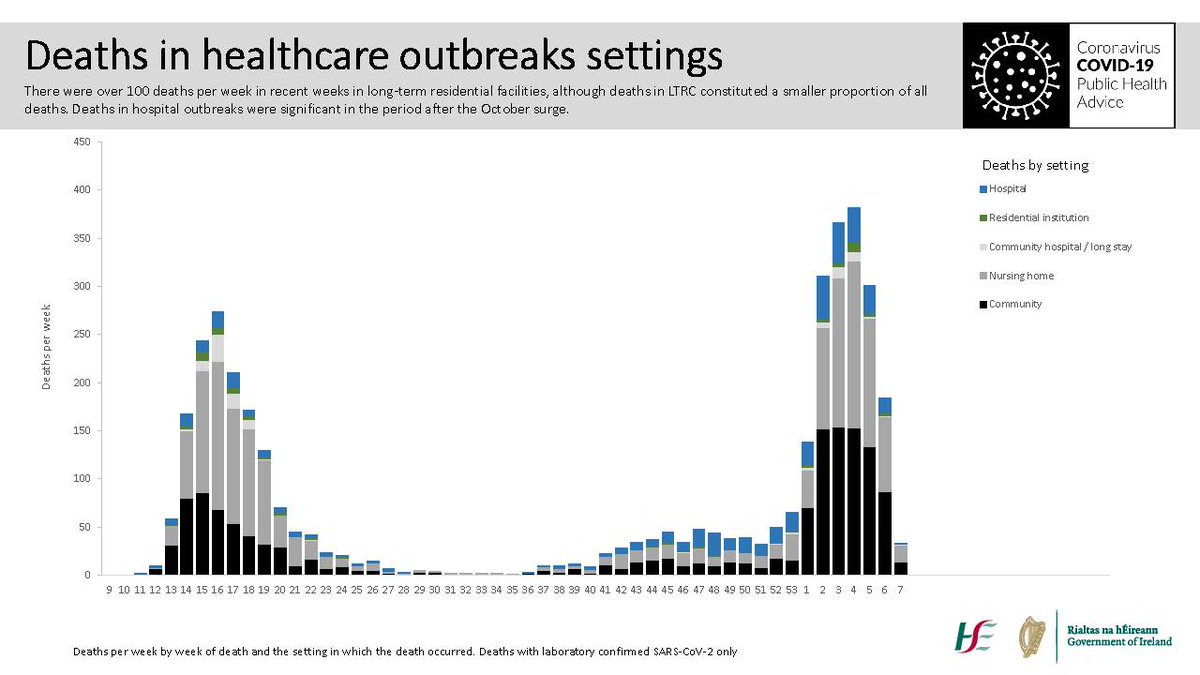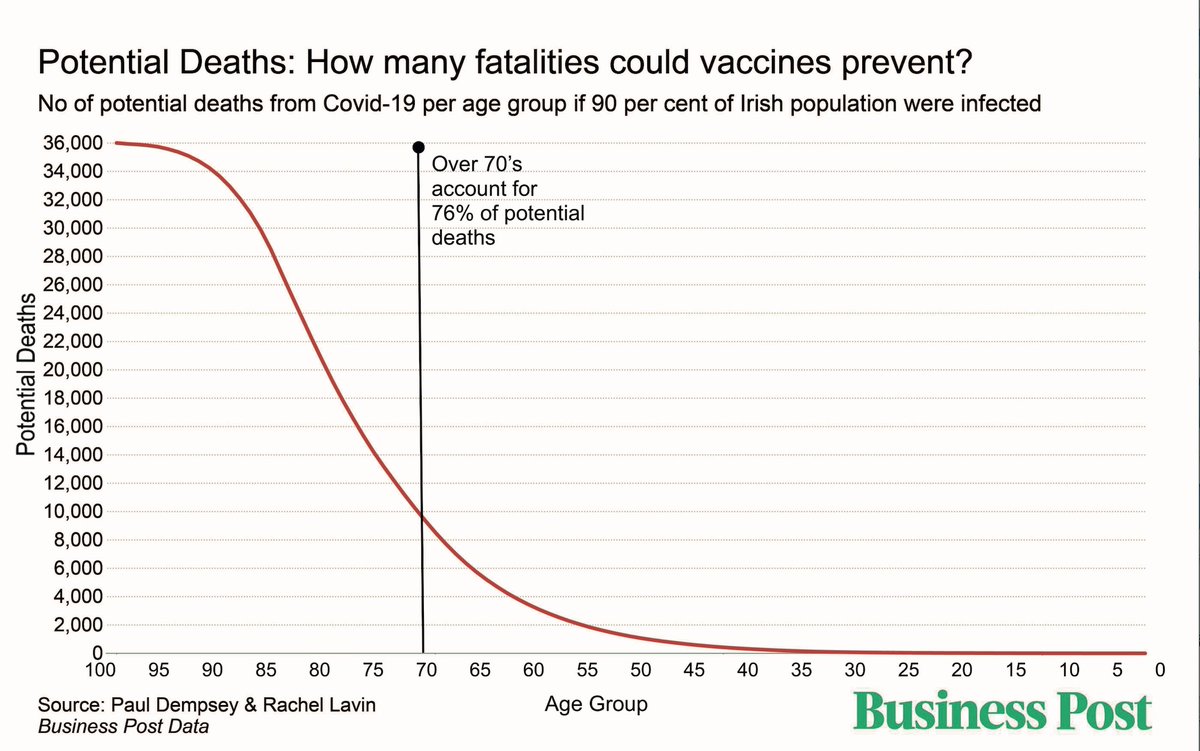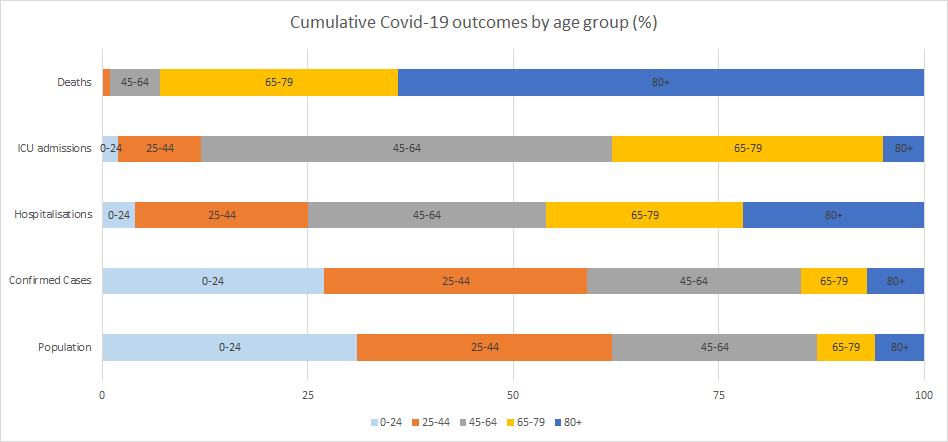
Last nights NPHET upload included 4 now deleted slides illustrating that as vaccine is rolled out Ireland will remain vulnerable to significant surges in cases, the worst projection being more than Dec/Jan wave, peaking at over 10k per day. They assume vax complete by October /1 







Slides are headed 'A Vulnerable period ahead' & illustrate a possibility of repeated surges & lockdowns, assuming 58,800 vaccinations per week. 85% efficacy green line has just two future surges & lockdowns, another (0 efficacy?) just repeats /2 

The most alarming one where R value is assumed to rise to 2 has a surge so enormous it vanishes off the top of the graph as it passed 10,000 cases. Looks to be a peak around 18k. Presumably these are 'look lads, despite vaccination you can still really feck this up' warning /3 

There are a couple more - a 'case by mode of transmission' shows the way the (deliberate - this was a money saving decision) under resourcing of public health led to increasing cases over running ability to contact trace in both October & December & that this situation remains /4 

A hospital acquired infections slide shows that these cases accounted for perhaps 20-30% of the hospitalisations in the January surge. A bit of a conspiracy theory has emerged suggesting that most hospitalisation were really hospital acquired, this wasn't the case /5 

Likewise this death by settings slides refutes another conspiracy theory that most of those dying were terminally ill hospital patients - the blue bar which would be the absolute maximum as it includes all hospital acquired looks to be 10% of the total /6 

I would presume these were slides for the cabinet sub committee ahead of the NPHET press event that got uploaded by error after it. I'd much sooner this level of detail be available to the public, a better collective understanding of the virus leads to stronger solidarity /7
The vulnerable period ahead caught my eye because I am concerned by the threat of lobbyists demanding a premature opening on the assumption that the virus can't cause carnage once over 65s are vaccinated. This is not the case
https://twitter.com/andrewflood/status/1351866736551874562?s=20
• • •
Missing some Tweet in this thread? You can try to
force a refresh














